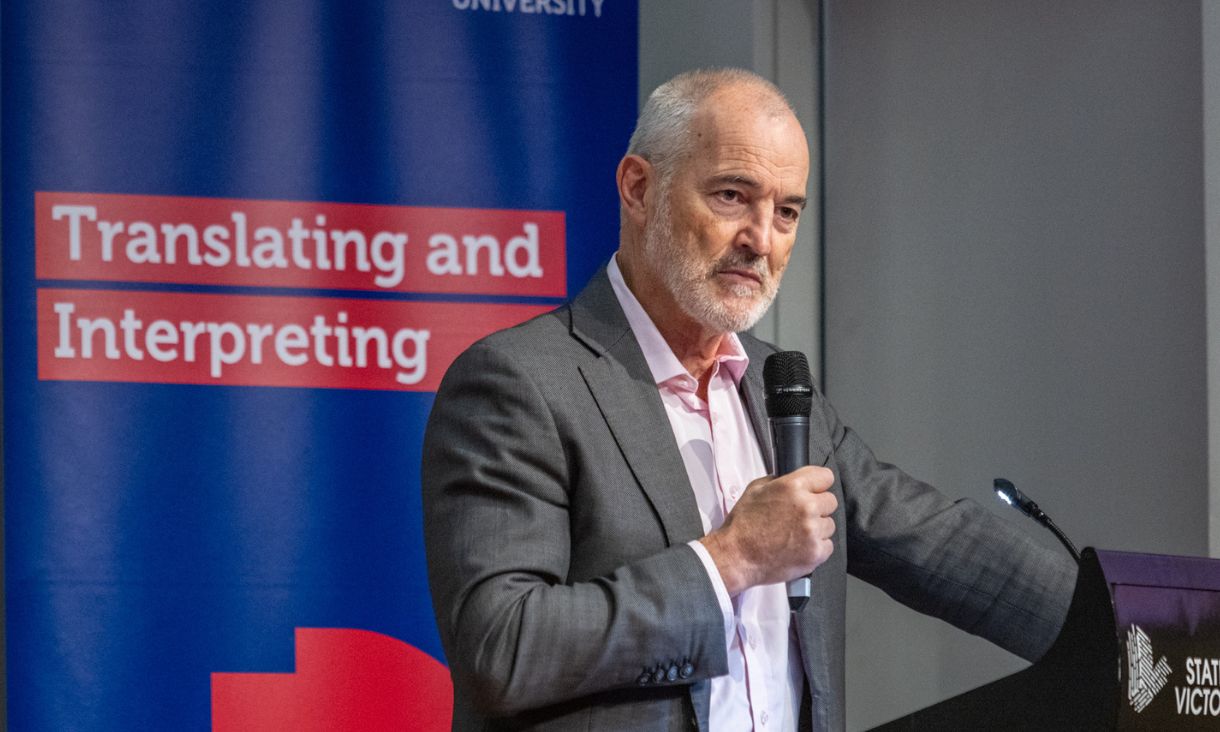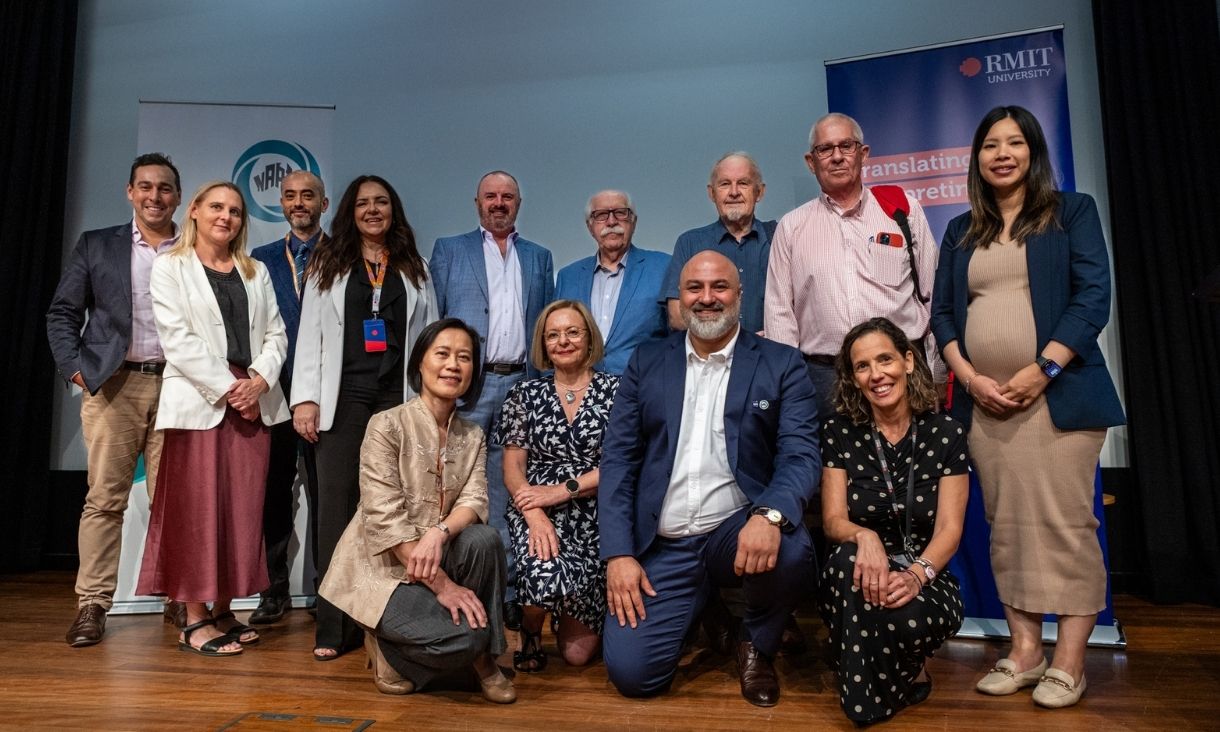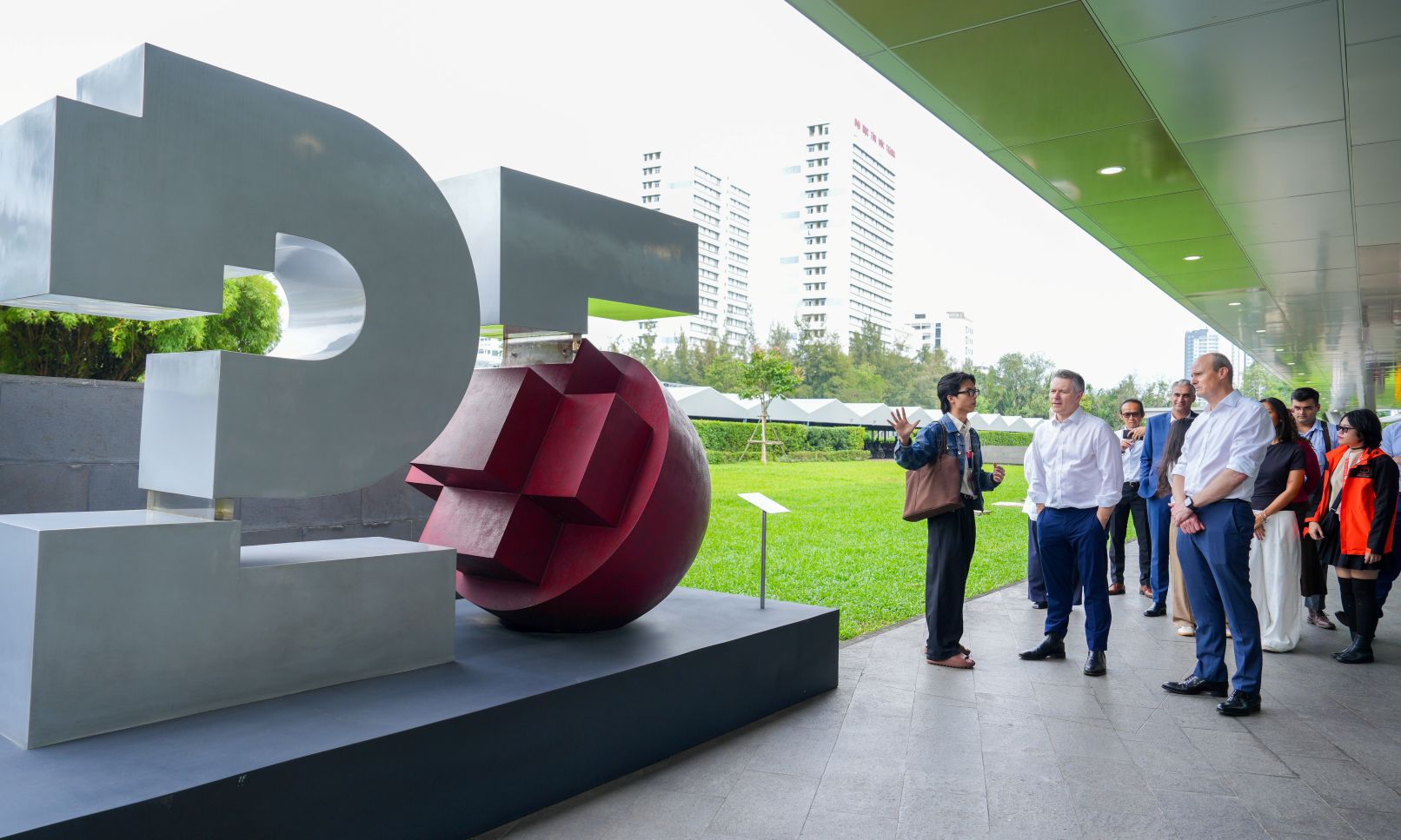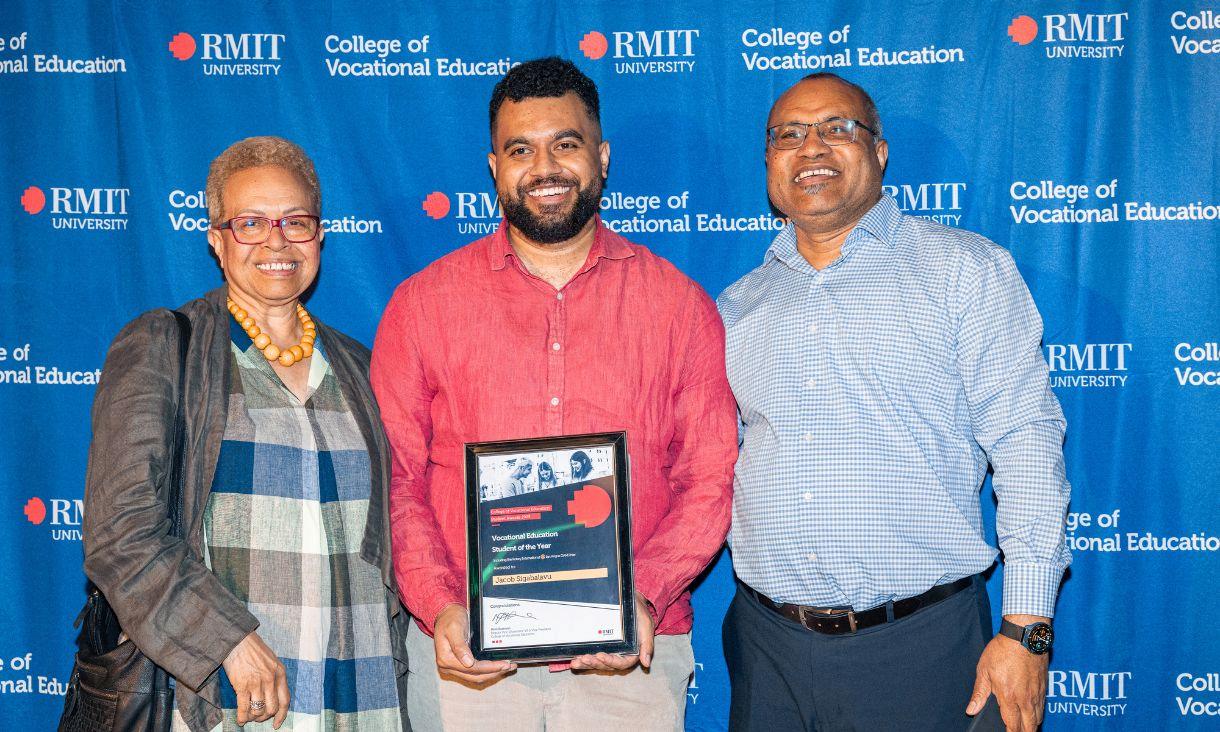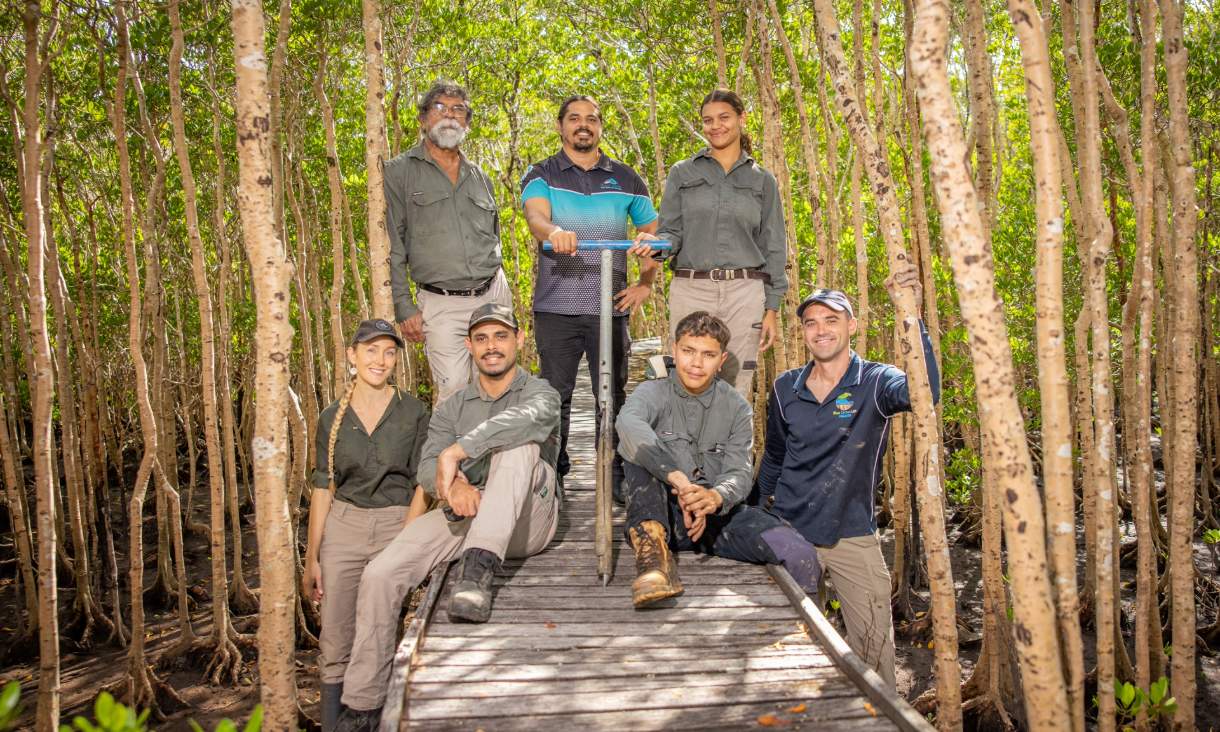Sedat Memorial Lecture
Rhys Williams co-delivered the Sedat Memorial Lecture with Assc Prof Miranda Lai at the RMIT-hosted symposium dedicated to the 50th anniversary of translation and interpretation education in Australia.
Williams has 40 years’ experience in vocational and higher education, principally in managing transnational education portfolios. He managed the delivery of Australian higher education and vocational courses at RMIT, Victoria University, and Box Hill Institute.
Rhys worked at RMIT between 1981 and 1996, and 2000 to 2005. In his first employment period he taught on, managed and developed the RMIT interpreting and translation portfolio finishing as head of the Social Science Department in the TAFE Sector. In his second employment period, he managed the Business Portfolio’s courses delivered in Singapore, Malaysia and China. He was also involved in the establishment of RMIT Vietnam.
---
Salutations,
Thank you, Dr Miranda for inviting me to say a few words ‘about the old days’ at today’s 50th anniversary celebrations. It is a great pleasure and honour to do so.
I want to frame my comments under three broad headings:
- Training and academic excellence
- Serving industry needs, and
- Leadership and innovation in complex circumstances
I believe that these three headings provide key reasons why interpreting and translation programs- niche programs which are always at risk- have been so successful at RMIT. These characteristics are embedded in your programs today and underpin their success. I hope to trace some links to these characteristics from the ‘old days’ to show how they have been very important over what is now a 50-year journey.
My first employment period at RMIT was between 1982 and 1996 in the then School of Communication and Social Science (affectionately known as ‘SOCASS’) in the Technical College which very soon became known as the TAFE sector. Hence I wasn’t there quite at the start. I was involved as a teacher, program coordinator for interpreting programs, and eventually Head of the Social Science Dept which housed interpreting programs. Later, we established innovative applied language acquisition programs, and this was where I first met Dr Barry Turner and many colleagues from the then RAAF School of Languages (or ‘Langs’). Barry, as Miranda said, together with Sedat were responsible for introducing the master’s program in 2008 you see thriving today at RMIT. Unfortunately, Barry is unable to join us today.
Leadership and innovation in complex circumstances is no better highlighted in the contributions of the Heads of SOCASS who were deeply involved in all aspects of the program.
The late Patricia Guthrie (always known as Pat), originally from the Florida Community College system, brought a unique understanding of migration, multiculturalism, language service needs and service to employers and stakeholders. Her robust leadership and strength as head of the Social Science Department and eventually SOCASS, resulted in the establishment of interpreting and translation on a firm footing. Senior leaders, who often knew nothing about the program and what it did, coming as they did principally from trade and technical backgrounds, did not dare to attack the program! Pat has an intimate understanding of what was required in the training space to give effect to the recommendations of the seminal Galbally Report which recommended the establishment of the Emergency Telephone Interpreting Service (precursor to TIS) and professional language service providers.
Carmen Heliotis, Pat’s successor, served industry needs through growth and innovation. Interpreting and translation was able to flourish in a larger, financially stronger and more diverse Centre.
This included a new Applied Languages Unit with interpreting, language acquisition programs in Japanese, Chinese, Indonesian, Koren and Thai, the Understanding Asia Through Language context curriculum units, and a language/culture unit in the MBA commissioned for Prof Quinton Willia.
Pat and Carmen were great role models and mentors for me professionally. Along with Adolfo Gentile (who is here in the audience), these three can be termed the ‘foundation pillars of Australian interpreting and translation’ education and training.
We rarely talked explicitly about serving industry needs and training excellence (not academic excellence in those days) but it was really part of our DNA.
During this time, we worked ‘hand in glove’ with the then TIS (which I mentioned before), Legal Interpreting Service, Central Health Interpreting Service, the Commonwealth translation service, the Education Dept interpreter service, and the Victorian Deaf Society. Staff from these agencies were involved in the course as Community language teachers, course assessors, advisory committee members, and advisors on ‘in-demand’ languages demonstrating the close collaboration with industry even back in those days.
RMIT knew that if we were to survive and thrive, we MUST provide graduates who were immediately employable. Please forgive me in advance for forgetting or neglecting some people, but key external supporters which come to mind were: Adolfo Gentile, Victoria College/Deakin University, George Papadopoulos (VEAC), Alan Nicoll (Legal Aid Commission), Elsa Buck (TIS), Pedro Diaz (Educ Dept), Ari Pappas and Sevim Alcelik (CHIS), John Flynn (VDS), Chris Dunn (Auslan Teacher), Marianne Bridge, Karen Clare and Maree Madden (Auslan interpreters), Hon Frank Vincent (Supreme Court Judge)
During this time we also worked very closely with NAATI- Peter Martin, Dr Peter Davidson, Sherrill Bell, Anne Looker come to mind. I served with Adolfo for many years on the NAATI qualifications and assessment committee and worked on the integration of the testing and course pathways to accreditation as we best could. A key part of training excellence, during these years at RMIT, NAATI credentials were always tied with a course pass. If you passed the course, you received NAATI interpreting accreditation; if you didn’t pass the course, you didn’t achieve NAATI accreditation nor receive the RMIT award. NAATI staff, NAATI nominated staff and service agency leaders were closely involved in course assessment. The coupling of the academic award with industry accreditation by the regulator was a key feature of the arrangement in those days.
We had very few student fails. Why? I would like to think that it was training excellence. Selection was closely tied to likelihood of reaching the required standard (most applicants were advised to enhance their B language skills); the pedagogy was at heart practical linked to industry practices; the teaching and the assessment teams were industry-based. Interpreting was viewed as a sophisticated applied communication skill within a complex role with pillars of objectivity, impartiality and confidentiality. It was never viewed as a language course; rather assumed a high-level of proficiency in at least two languages.
I would like to finally make brief comment on some of our initiatives during my time and recognise particular people. These have been selected to highlight the three headings above which are central to 50 years of past and future success.
Reflecting industry and community needs over this period:
- Accredited Level 2 interpreters, or in today’s lingo provisional interpreters, languages offered were: English and: Serbian, Croatian, Vietnamese, Khmer, Laotian, Auslan, Japanese, Mandarin, Cantonese, Macedonian, Amharic, Turkish, and Spanish. Process and systems were in place to quickly change or add new community languages. This is evidence of RMIT T&I’s commitment to serving community language needs since day one, and this has always been central to what we do, as I understand, till today.
- We also have ‘Minority language’ classes (short courses covering ethics and interpreting techniques) principally for TIS included persons working in: Tetum, Tamil, Sinhalese, Dari, Pashtun, Hindi, Japanese, Amharic, Somali, Ethiopian, and a few others which I can’t locate the files on
- With the late, dear Tien Vu, interpreting graduate, we ran a marvellously successful national Vietnamese culture and how to work effectively with an interpreter seminar program for Commonwealth and state police, customs, taxation and other officials whose engagement with the Vietnamese community was at times very problematic. I understand there is a group of Vietnamese delegates in the audience studying in the Graduate Certificate program right now, from the Vietnamese Ministry of Foreign Affairs and other important government departments. This is testament to our enduring connections and commitment to training T&I professionals in this language pair.
- On George Papadopoluos’s and Frank Costa’s urging (legendary Geelong Mayor and Costa Horticulture magnate) we ran a ‘weekend/block/resource based’ accredited program in Geelong, Shepparton and Mildura to meet regional needs. Principally in English and Serbian & Croatian
- With the Friends Society in Hobart (the Quakers) and the strong support of the Hon Gareth Evans, Foreign Minister, we trained a group of highly traumatised Cambodians to be language service providers for the first Cambodian elections under the UN’s supervision after Pol Pot was removed from power
- We ran practical interpreting techniques for senior students at the RAAF School of Languages based then in Point Cook. And I understand that until more recently, we continue to refer our RMIT trainers to them to support their ongoing training needs for ADF multilingual personnel.
As TAFE adopted the new competency-based training pedagogy in the late 1980s we developed the first national Diploma of Interpreting, in the new CBT format. Without RMIT’s leadership to take on developing this new course in CBT mode with all states involved, the industry could have lost its paraprofessional course. NAATI was helpful and had a strong vested interest in ensuring that its standards, accreditation and requirements were met in both the new curriculum and the assessment. RMIT Curriculum officers, Hugh Guthrie and Peter Bruhn were of marvellous assistance in the process. We were successful & implemented the new national course at Southbank TAFE, Brisbane (Frank Doherty), Adelaide (Neven Marovich), Petersham/Ultimo TAFE and Central (Perth) TAFEs. Also we set the program up at Auckland Institute of Technology under the new trans-Tasman qualifications and assessment arrangements. I understand Auckland Institute of Technology has also evolved to be today’s Auckland University of Technology, a similar pathway from providing solely vocational education to becoming a university like RMIT. Even better to know that it also IS the pioneer of T&I training and education in New Zealand, just like RMIT. And we played a role in it! All the above is an important strategic chapter RMIT should be proud of & the sector indebted to it for
I believe that RMIT’s English/Auslan course was the first in the land. This represented huge professional and personal learning for myself and the RMIT Team. I recall an early meeting which challenged my preconceptions. John Flynn, Victorian Deaf Society head explained that his organisation had recently given back a large sum of money to the Commonwealth earmarked for deaf athletes to train for the Paralympics because ‘the deaf community was a linguistic and cultural minority, not a disabled community’. I learned so much from our first students who were mostly CODAs- the hearing children of deaf adults whose A language was Auslan and who acquired it. I employed a sessional deaf Auslan teacher who, via an interpreter, told me his family were overjoyed that their new daughter was deaf. I am sure throughout many years till now when RMIT keeps running Victoria’s only Auslan interpreting course, we have benefited from working with our Auslan colleagues and community members, and we keep growing our appreciation and understanding of a visual language like Auslan.
For many of our students, especially Vietnamese, Khmer and Lao students, the interpreting course represented their first success in the Australian education system. It also enabled them to make some money in interpreting and experience an Australian professional workplace. However, for many of these students whose lives as professionals in their home country was so rudely stopped by war, this first success was the catalyst for degree and master course leading to other professions. A couple of students I keep in contact with are good examples, and there are many more. Loan Hoang was a French teacher in Saigon. Because she was also good at maths, we helped her get into the RMIT B Accounting ‘through the back door’. Today she is about to retire from a very decorated accounting career. Thanh-Kham Tran, OAM, who came on a leaky boat, was a co-founder of the famous Australian Vietnamese Women’s Association (AVWA). Using colloquial parlance, ‘AVWA started with 2 people and a dog in a phone box’, today it is a $30m organisation at the heart of providing support to local Vietnamese. These are proudly our graduates!
On a sad note, I regularly think of Vesna Markoska, one of my very bright young Macedonian interpreting students taking the course concurrent with her Arts degree and about to marry. On my birthday on the 9th of August 1987, she was killed in the Hoddle Street massacre after stopping to save another person. She would have been a marvellous interpreter. I hope you don’t think I am being indulgent but I want her to be remembered.
For posterity, I will conclude by reading the names of key staff who were associated with the interpreting and translation program (and apologies for omissions which I hope others can rectify):
- Community language teachers: Nikola Tasevski, Eric Lloga, Meryl Aydin, Dr Nguyen Van Hung, Thel Thong, Bedellu Desta, Pedro Diaz, Marianne Bridge, Yoko Pinkerton
- English teachers: Trevor Ashton, Robyn Colls, Richard Cox
- Interpreting Techniques teachers: Pat Guthrie, Carmen Heliotis, Joe Wilder, Diana Russell, Alan Bregu, Elsa Buck
[END]

